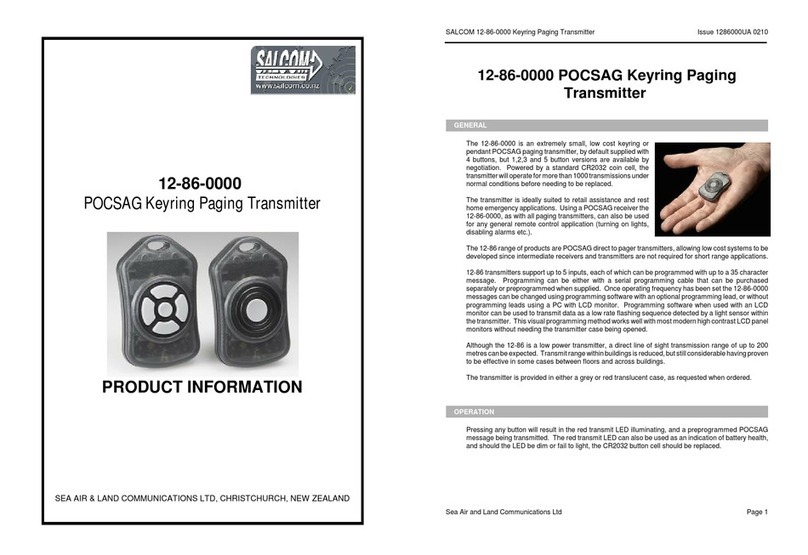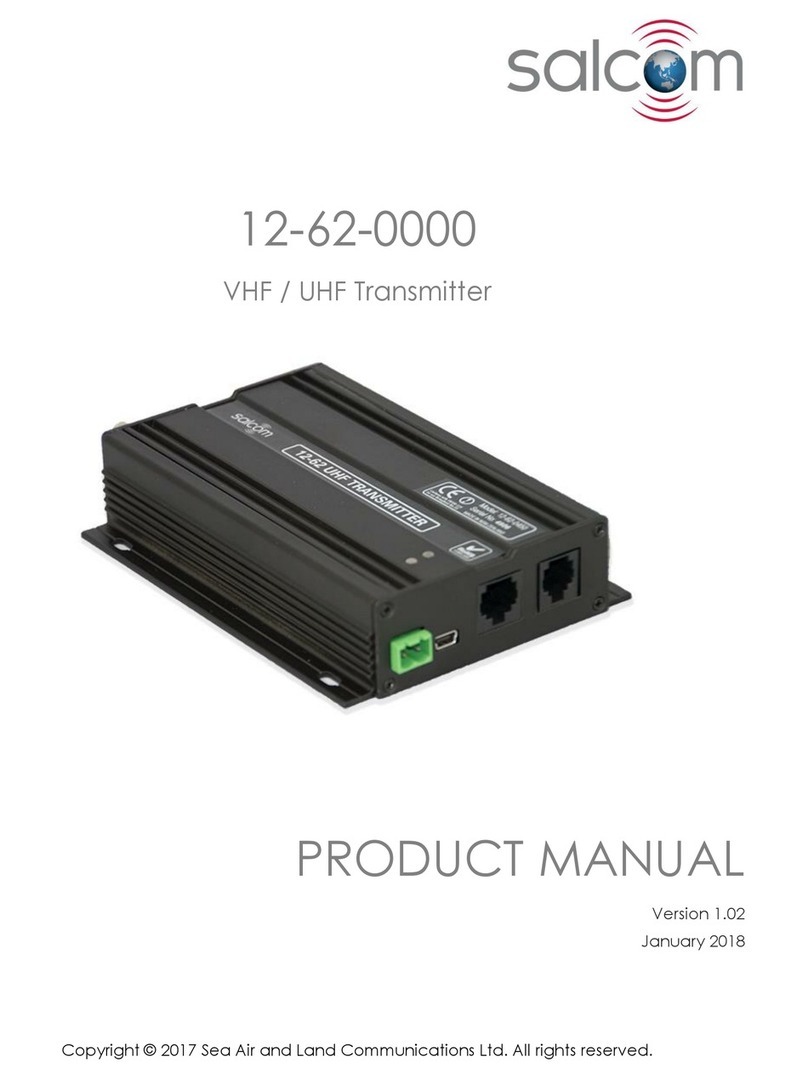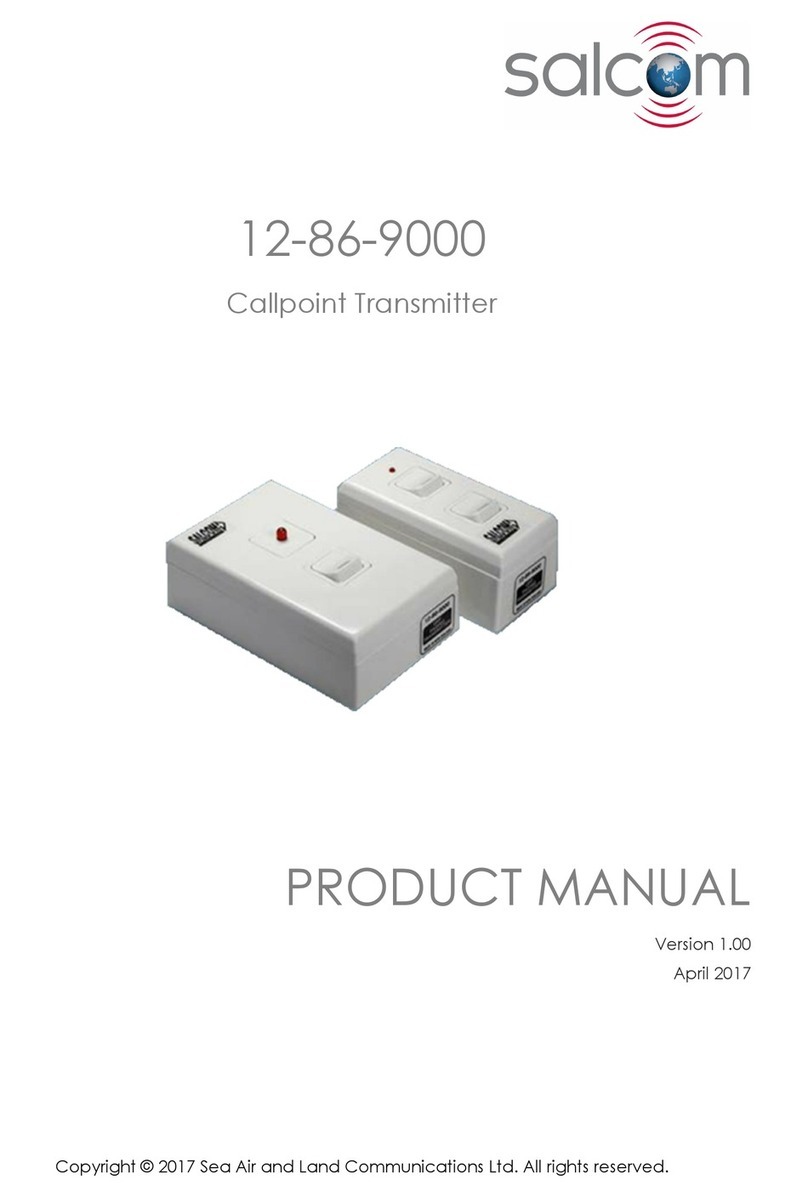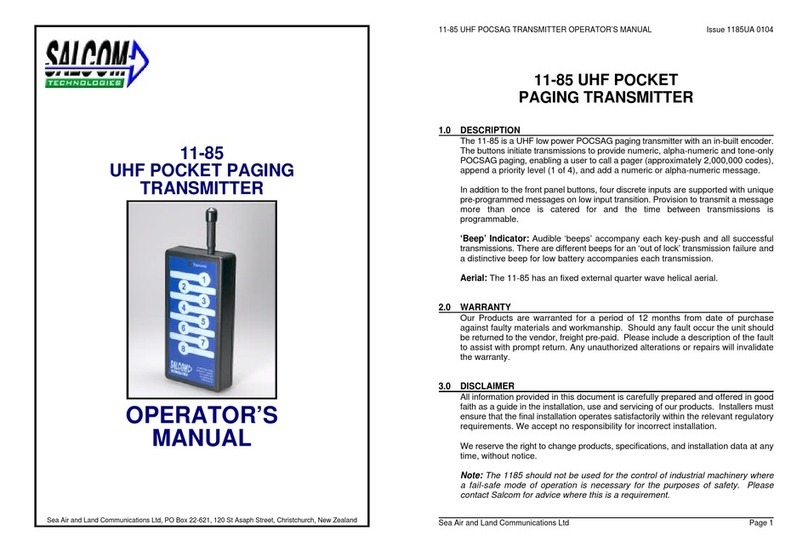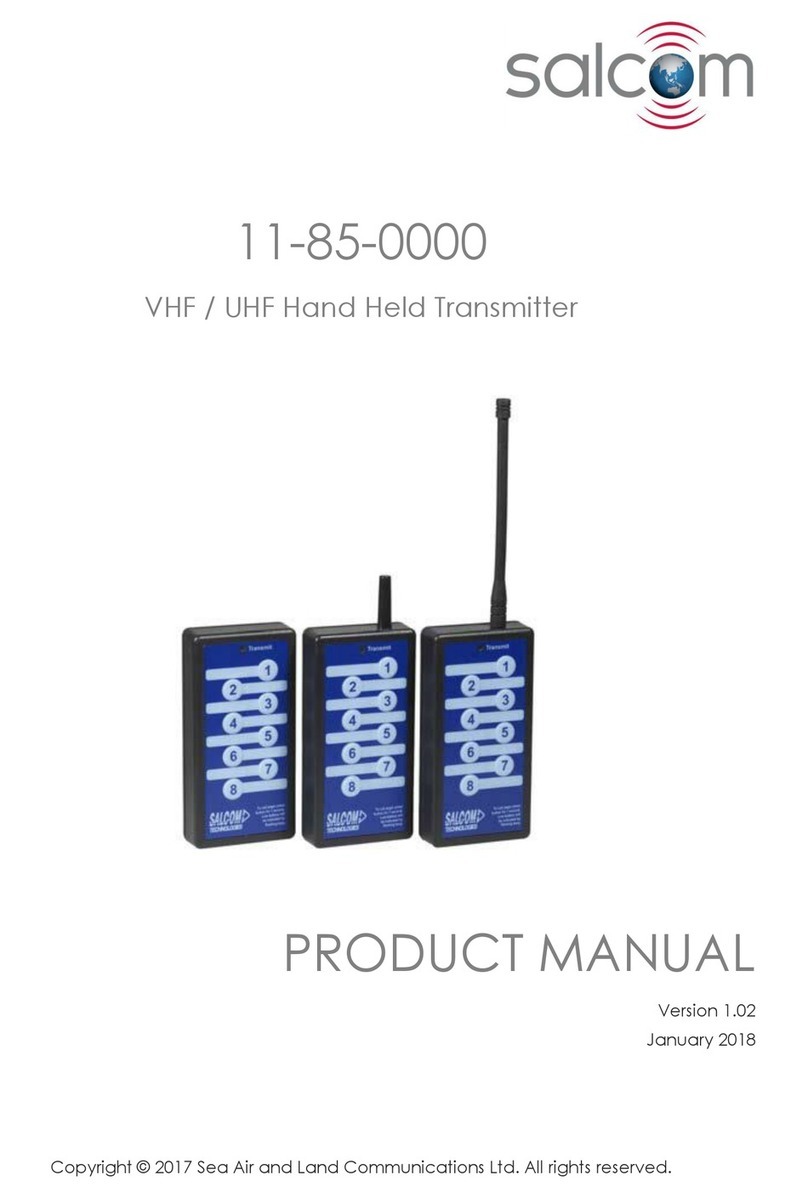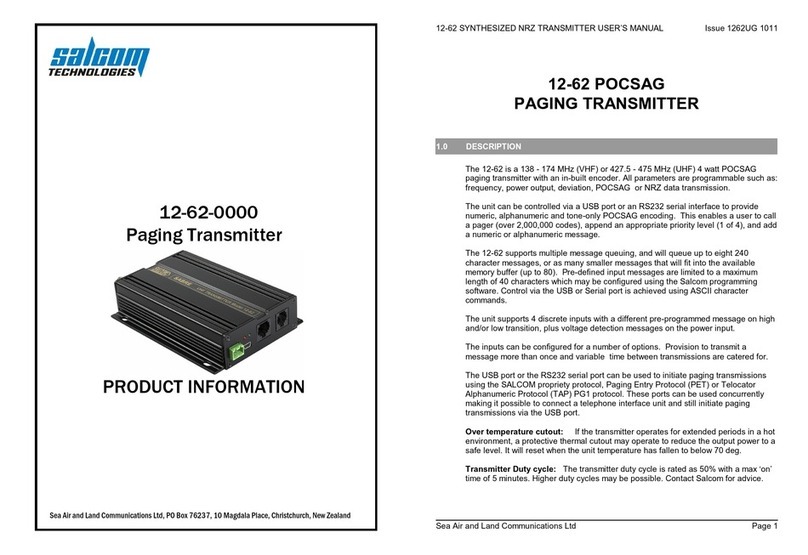
P a g e | 3
20-62 VHF & UHF TRANSMITTER
Sea Air and Land Communications Ltd, 10 Vanadium Place, Addington, Christchurch 8024, New Zealand March 2020
The Salcom 20-62 is a 5 Watt, stand-alone FSK transmitter with a POCSAG encoder and external
NRZ input. Models are available for the VHF or UHF bands. Each model covers its full specified
frequency range without the need for any mechanical adjustments or additional calibration. The
output power level can be programmed from 50mW to 5W.
Key Features:
POCSAG encoder: The 20-62 provides a built-in POCSAG encoder, supporting 512 and
1200 baud with numeric and alphanumeric messages. The 20-62 POCSAG encoder can
queue up to 40 messages for transmission, with a total of up to 1000 characters combined.
Individual messages can be up to 240 characters long.
External NRZ input: Externally generated NRZ data can be transmitted using the external
modulation input and PTT input.
USB, Serial and Ethernet ports: The 20-62 may be controlled through four ports: two physical
RS-232 ports, one USB serial port, and one TCP/IP or UDP Ethernet connection.
Message protocols: The 20-62 supports a wide range of messaging protocols, including
Salcom protocol, TAP (PET), TNPP, and many more. The 20-62 can support up to four
different messaging protocols concurrently, one on each port. For more details please
refer to the protocol list provided in this manual.
Triggered messages: Messages may be triggered using four input pins, the battery level,
or a regular watchdog timer. Messages may be triggering on rising or falling edges with a
programmable de-bounce delay. The input states and the battery state may also be
transmitted at startup, or at regular intervals with the watchdog timer. These pre-
programmed messages may be up to 40 character long.
Sacoto configuration tool: The Salcom “Sacoto” configuration software allows full
configuration of all functions of the 20-62 transmitter via any serial port, the USB port, or the
Ethernet port. Note that the Ethernet port cannot be used to configure the Ethernet port!
Store & Forward repeater: The 20-62 can be configured to operate as a store & forward
repeater when used with a separate paging receiver such as the Salcom 12-84. Messages
received by the receiver can be retransmitted by the 20-62 to extend the paging
coverage area. The 20-62 provides features to prevent loops and multiple retransmissions,
and can provide a delay at the originating transmitter to allow time for repeaters to
forward messages without interference.
Extended database tool: Some messaging protocols use a database of CAP codes that
are stored within the 20-62. Sacoto supports up to 100 CAP codes, which is sufficient for
most applications. However, if more are required an extended database tool is available
to allow up to 1000 CAP codes. This is a useful feature when used with the Salcom 12-36
Paging Telephone Voice Interface.
